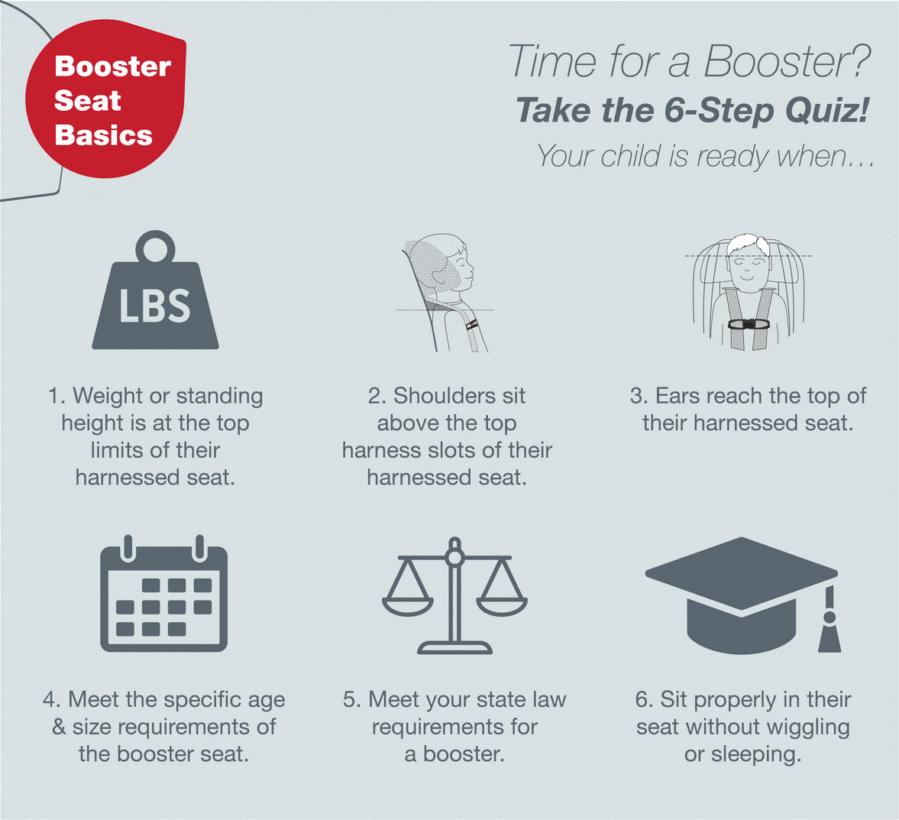Not seeing items you’ve added? Sign in
Fit & Comfort
More to Measure When Moving to a Booster

Is your big kid ready for a boost?
The maximum weight and height capacity are commonly used as a guide for how long a child will fit in a car seat, but many children will reach the maximum seated shoulder height first. Your child’s harness strap position and head position within the car seat are the key factors that determine when they have outgrown their seat. Both measurements are directly related to your child’s seated shoulder height.
How to Check the Harness Strap Positioning
When your child is forward-facing, their harness straps should generally be positioned at or above the shoulders, depending on your car seat make and model. Once your child reaches the top harness slot, they have outgrown the seat - even if they haven't hit the height or weight limit.
How to Measure Your Child's Seated Shoulder Height
Torso lengths can vary significantly from child to child, even when children are the same height. For this reason, it’s important to measure their seated shoulder height to get a better understanding of how long they will likely fit in the car seat harness.
To measure your child’s seated shoulder height, follow these simple steps:
- Sit your child on the floor against a wall.
- Place a ruler or straight object across the top of their shoulder to mark the height.
- Measure up from the floor to the top of the shoulder marker to get an accurate seated shoulder height measurement.
To help you monitor your child’s fit in their car seat, we've included harness slot height ranges on all our product detail pages. These measurements act as a guide to help you determine how much room your child has left to grow, and if it’s time to look for their next car seat.
If you find your child has outgrown the harnessed height of their current seat, familiarize yourself with our Booster Basics before making the move. While some children might meet the minimum weight, height, age and maturity level for a belt-positioning booster seat, the National Highway Traffic Safety Administration (NHTSA) recommends riding in a 5-point harness as long as possible.
